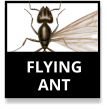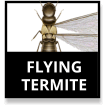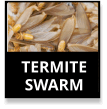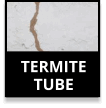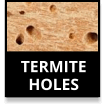Posted by Admin
Termites are among the most destructive pests, causing extensive damage to homes and businesses in Doylestown every year. Left untreated, a termite infestation can lead to costly repairs, sometimes amounting to thousands of dollars.
Subterranean termites spend most of their lives underground, making them difficult to detect. They thrive in dark, damp spaces such as basements and crawlspaces, quietly damaging wood structures. Early detection is critical—if you suspect an infestation, contact a pest control professional immediately to prevent further destruction.
Because termites stay hidden, most people don’t recognize them on sight. Exterminators are trained to identify the different members of a termite colony:
Termites require moisture to survive, making underground nests their preferred habitat. They construct mud tunnels to travel undetected from the soil to food sources. Over time, these colonies can expand, with multiple nests forming near a single food source, such as rotting wood or moisture-damaged structures.
While termites don’t attack humans, their appetite for wood and cellulose-containing materials makes them highly destructive. They damage wooden doors, frames, furniture, books, and even clothing. Though rare, soldier termites may bite if their nest is disturbed.
Termites consume cellulose, a key component of wood and plant-based materials. They feed on structural wood, siding, sheetrock, wallpaper, furniture, books, and even linens. This widespread diet makes them a serious threat to homes and businesses.
Termites often cause unseen structural damage in attics, basements, crawlspaces, and wall voids. Over time, large colonies can hollow out support beams, leading to serious structural issues.
Signs of termite damage include:
Watch for these warning signs of a termite infestation:
Reduce the risk of termites by following these preventive measures:
Newtown Termite & Pest Control is a certified Termidor® exterminator, utilizing the nation’s #1 termiticide for long-lasting termite control.
Our technicians apply Termidor® to the exterior of homes and businesses, where it blends into the soil. Termites unknowingly transfer the treatment to others in their colony through contact and ingestion, effectively eliminating the infestation.
USDA studies show that Termidor® 80 WG provides over 15 years of protection with no detected termite damage in treated structures.
Since 1993, Newtown Termite & Pest Control has been a trusted provider of termite extermination. As a family-owned business with an A+ Better Business Bureau rating, we stand behind our work with a renewable, transferable triple guarantee:
Experts recommend a professional termite inspection every two to three years to detect and prevent infestations before serious damage occurs. Since termites are often called the "silent destroyers," early intervention is key.
Protect your Doylestown home or business—schedule a FREE inspection today:
Schedule a FREE Termite Inspection
